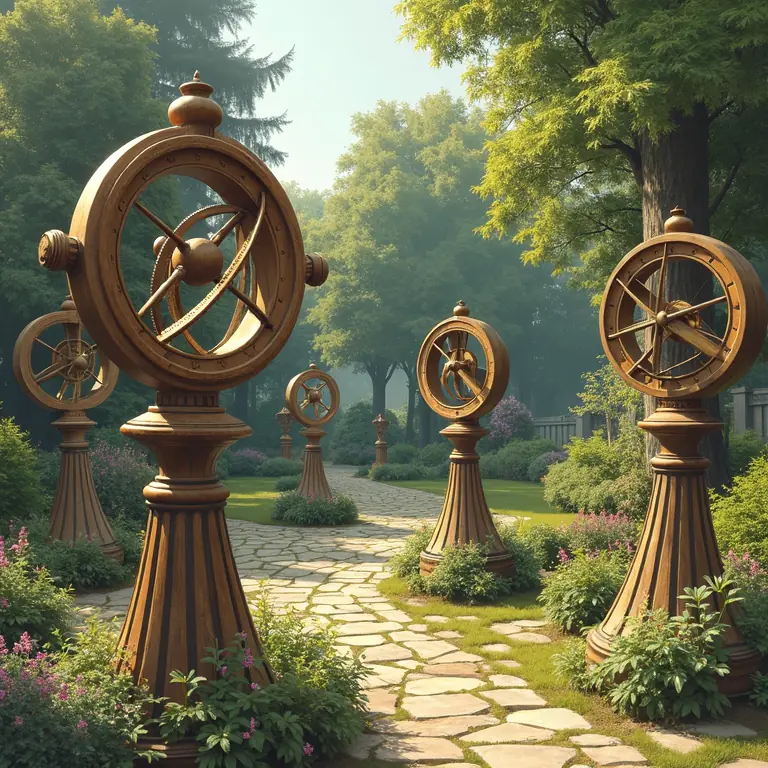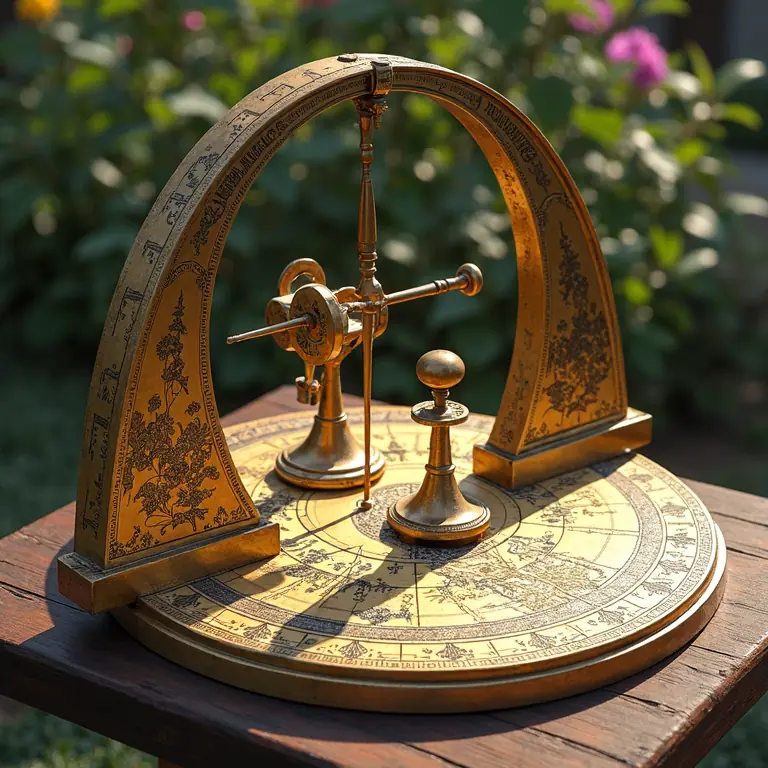For centuries, before the advent of accurate mechanical and digital clocks, humanity relied on the sun to tell time. The primary instrument for this purpose? The sundial. Often viewed as charming garden ornaments or historical curiosities, antique sundials represent a surprisingly sophisticated intersection of astronomy, mathematics, and craftsmanship. Their consistency across cultures and eras, despite variations in design, speaks to the fundamental, unchanging principles governing their operation. This article delves into the science behind these fascinating timekeepers, exploring their history, types, construction, and the celestial mechanics that make them work.
A Brief History of Telling Time with the Sun
The earliest evidence of sundials dates back to ancient Egypt, around 1500 BCE, in the form of shadow clocks – simple obelisks casting shadows that indicated the time of day. These weren’t precisely calibrated to hours as we know them, but they marked the passage of time based on the sun’s movement. The ancient Babylonians and Greeks further refined sundial technology, developing more accurate and portable designs. The Greeks, particularly, were instrumental in understanding the mathematical principles underpinning gnomonics – the science of sundial design.
The Romans embraced sundials, incorporating them into public spaces and private homes. With the expansion of the Roman Empire, sundials spread throughout Europe. During the Middle Ages, monasteries played a crucial role in preserving and advancing sundial knowledge, often using them to regulate the canonical hours of prayer. The Renaissance witnessed a revival of classical learning, including astronomy and mathematics, leading to a golden age of sundial making. Complex and ornate sundials became status symbols, reflecting the owner’s education and wealth. The invention of accurate mechanical clocks in the 14th century didn’t immediately displace sundials; instead, they often served as a means to *regulate* those early clocks. It wasn’t until the 18th and 19th centuries, with the increasing precision of mechanical timekeeping, that sundials began to decline in practical use, evolving into decorative and scientific objects.
The Core Principles: Gnomonics and Celestial Mechanics
At the heart of every sundial lies gnomonics. This science dictates the design and construction of the gnomon – the part of the sundial that casts the shadow – and the dial plate, which displays the time. The fundamental principle is simple: the sun appears to move across the sky due to the Earth’s rotation. The gnomon’s shadow moves accordingly, indicating the time on the calibrated dial plate.
However, the sun’s apparent movement isn’t uniform. Several factors influence its path across the sky:
- Earth’s Axial Tilt: The Earth is tilted on its axis at approximately 23.5 degrees. This tilt is responsible for the seasons, and it significantly affects the sun’s altitude (angle above the horizon) throughout the year.
- Earth’s Orbit: The Earth’s orbit around the sun isn’t perfectly circular; it’s an ellipse. This means the Earth’s distance from the sun varies, impacting the apparent speed of the sun’s movement.
- Latitude: Your location on Earth (latitude) determines the sun’s maximum altitude at noon and the length of daylight hours. A sundial designed for one latitude will be inaccurate at another.
- Equation of Time: This is a complex factor arising from the combination of Earth’s axial tilt, elliptical orbit, and the precession of the equinoxes. It means that the sun’s apparent time (as indicated by a sundial) differs from mean solar time (the time kept by clocks) throughout the year.
Sundial designers must account for these factors to create an accurate timekeeping device. The complexity of these calculations is why sundial making was often a specialized skill.
Types of Sundials
Sundials come in a remarkable variety of designs, each suited to specific purposes and environments. Here are some of the most common types:

Horizontal Sundials
Perhaps the most recognizable type, horizontal sundials feature a dial plate laid flat, and a gnomon typically aligned with the Earth’s axis. They are relatively easy to construct and read, making them popular for gardens and public spaces. However, they require careful calibration based on the local latitude. The hour lines on a horizontal sundial are not evenly spaced, reflecting the changing length of daylight hours throughout the year.
Vertical Sundials
These sundials have a dial plate mounted vertically, often on a wall. The gnomon can be a rod, a triangle, or a more elaborate shape. Vertical sundials are categorized based on which direction their dial plate faces (south, east, west, or north). Their design is more complex than horizontal sundials, as the angle of the dial plate affects the hour line calculations.
Equatorial Sundials
These sundials have a dial plate parallel to the Earth’s equator, and the gnomon is aligned with the Earth’s axis. They are arguably the most accurate type of sundial because the sun’s apparent movement is most uniform in the equatorial plane. However, they require precise alignment and can be less practical for everyday use.
Analemmatic Sundials
A unique and fascinating design, the analemmatic sundial uses a person as the gnomon! The dial plate is marked with hour lines, and the user stands on the appropriate date marker to cast a shadow indicating the time. These sundials are visually striking and demonstrate the relationship between the sun, the Earth, and human presence.
Portable Sundials
Designed for travelers and scholars, portable sundials were common before the widespread availability of accurate clocks. They often incorporated multiple dial plates and adjustable gnomons to accommodate different latitudes. These were often beautiful objects, crafted from materials like brass, ivory, and silver.
Constructing an Antique Sundial: Materials and Techniques
Antique sundials were crafted from a wide range of materials, depending on their intended use and the owner’s resources. Common materials included:

- Stone: Marble, granite, and limestone were popular choices for large, permanent sundials.
- Metal: Brass, bronze, and iron were used for gnomons and dial plates, offering durability and precision.
- Wood: Often used for portable sundials or less expensive designs.
- Ivory: A luxurious material favored for small, portable sundials.
- Glass/Ceramic: Used for dial plates, sometimes decorated with enamel or paint.
The construction process involved several steps:
- Calculating Hour Lines: Using gnomonic formulas, the positions of the hour lines were calculated based on the local latitude.
- Creating the Gnomon: The gnomon was carefully crafted to ensure accurate alignment with the Earth’s axis.
- Preparing the Dial Plate: The dial plate was engraved or painted with the hour lines and other markings.
- Assembly and Calibration: The gnomon was securely attached to the dial plate, and the sundial was carefully aligned to true north.
The skill of the sundial maker lay in their ability to perform these calculations and execute the construction with precision. Errors in any stage of the process could lead to inaccuracies in timekeeping.
Reading an Antique Sundial: Considerations and Challenges
Reading an antique sundial isn’t as straightforward as glancing at a modern clock. Several factors need to be considered:
- Latitude Adjustment: Ensure the sundial is calibrated for your specific latitude.
- True Solar Time vs. Clock Time: Sundials indicate true solar time, which differs from clock time due to the Equation of Time. A correction table is often needed to convert solar time to clock time.
- Daylight Saving Time: Sundials do not account for daylight saving time.
- Gnomon Alignment: The gnomon must be perfectly aligned with the Earth’s axis for accurate readings.
- Shadow Clarity: A clear, distinct shadow is essential for accurate timekeeping. Diffuse sunlight can make it difficult to read the dial.
Furthermore, antique sundials may have suffered from wear and tear over time, affecting the accuracy of the hour lines. The gnomon may have been damaged or misaligned. Despite these challenges, reading an antique sundial provides a unique connection to the past and a deeper understanding of the sun’s influence on our lives.
The Legacy of Sundials: Beyond Timekeeping
While largely superseded by modern timekeeping devices, sundials continue to hold a significant place in history and culture. They represent a remarkable feat of human ingenuity, demonstrating our enduring fascination with the sun and the cosmos. They serve as beautiful garden ornaments, educational tools, and reminders of a time when life moved at a slower, more deliberate pace. The study of antique sundials offers insights into the history of science, mathematics, and craftsmanship. Their consistent principles, applied across diverse cultures, reveal a universal human desire to understand and measure the passage of time.
The precision and artistry found in these instruments also reflect a broader historical context. For instance, the elaborate sundials commissioned by wealthy landowners often mirror the social structures and intellectual pursuits of their era, similar to the meticulous regulations of historical boarding schools and their emphasis on order and discipline. The tools used to create them, like the precision instruments employed in antique lockpicking, demonstrate a dedication to technical skill and problem-solving. Even the aesthetic considerations in their design echo the patterns seen in vintage postcard design, where consistent artistic trends reflected broader cultural values. The very names given to locations near prominent sundials, much like the etymology of place names, can reveal historical connections to timekeeping and astronomical observation. And finally, the materials and styles used in their construction sometimes reflect the social customs surrounding Victorian mourning practices, particularly when crafted from somber materials or incorporating symbolic motifs.
Today, sundials are experiencing a renewed appreciation as collectors’ items and symbols of sustainable living. They remind us of our connection to the natural world and the enduring power of the sun.


 The Curious Mechanics of Celestial Globes: Mapping the Heavens in Miniature
The Curious Mechanics of Celestial Globes: Mapping the Heavens in Miniature  The Curious Chronicle of Celestial Navigation: Stars, Sextants, and the Art of Finding Your Way
The Curious Chronicle of Celestial Navigation: Stars, Sextants, and the Art of Finding Your Way  The Lost Art of Navigation by the Stars: How Ancient Sailors Charted the Seas
The Lost Art of Navigation by the Stars: How Ancient Sailors Charted the Seas  Celestial Oddities: Unexplained Phenomena in the Night Sky
Celestial Oddities: Unexplained Phenomena in the Night Sky